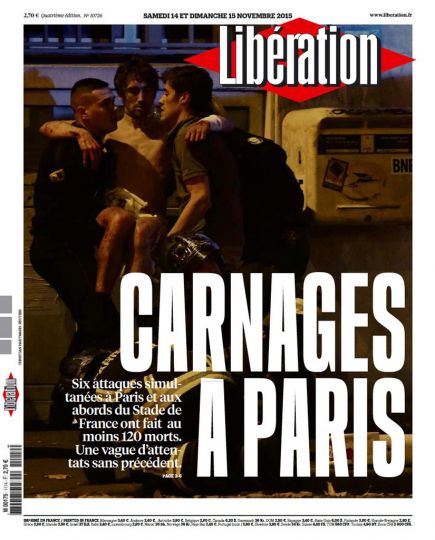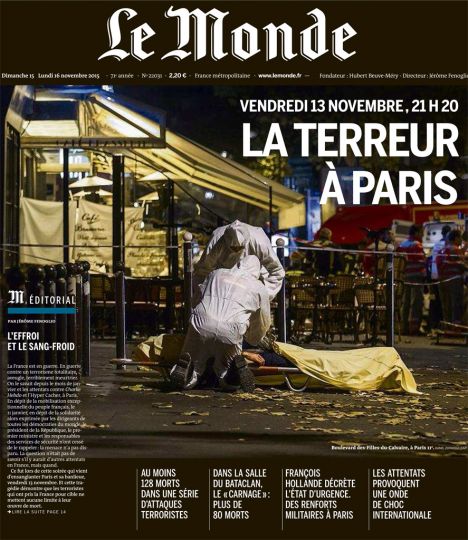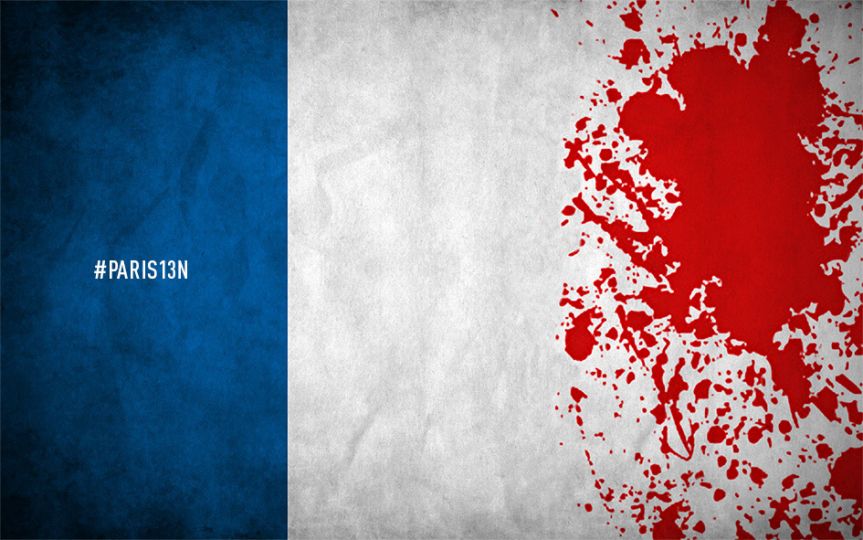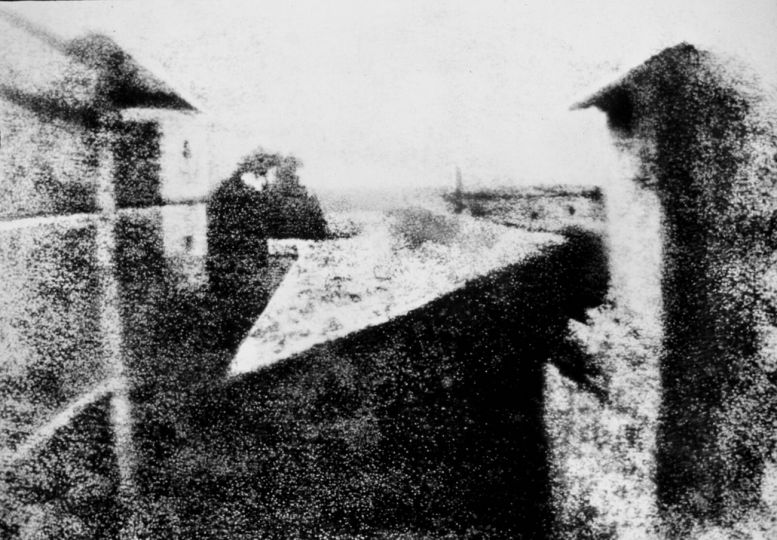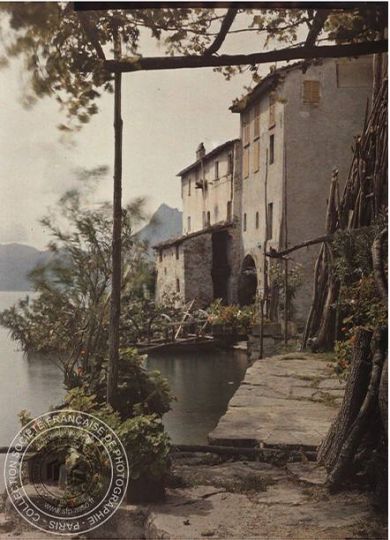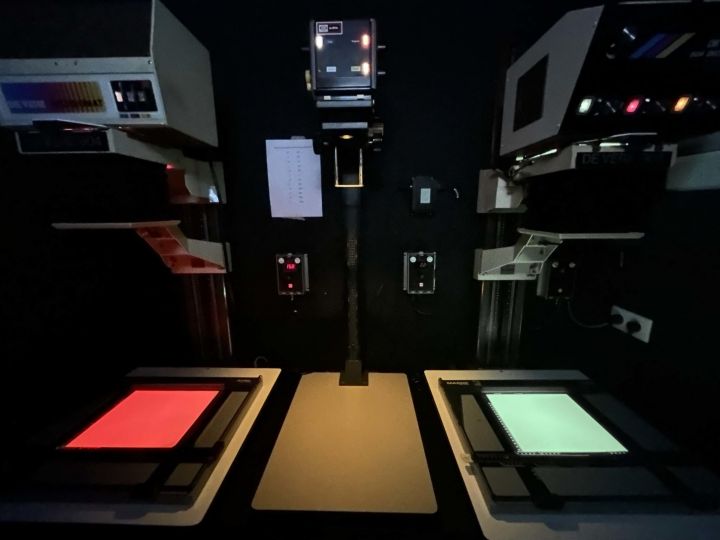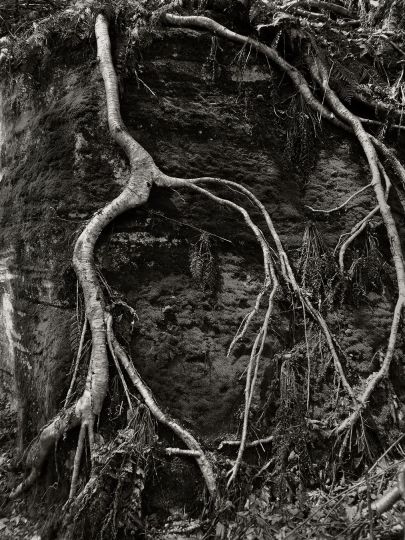The Attacks of Friday 13 November 2015 – Behind the scenes of the photographic service at Libération and the story of its photographers
by Fanny Lambert
From 9.20pm to 3.00am, the story of a long night in between emergency and shocked amazement.
It is 8.20pm in the evening of Friday 13th November, when several shots violently strike the capital. By an irony of fate, that evening at the newspaper Libération we are getting ready for a private reception. The next day’s edition had already been tied up an hour and a half before when the editors got the news by phone. At that moment “everybody thought of Charlie, we couldn’t think of anything else, it’s a liability, an experience we all know” explains one of the members of the photo service. Here, you move fast. Most of the team on site swing into action in just fifteen minutes.
“The important thing at these times,” confides Lionel Charrier, head of the service, “is to be quick, keep your head and send back photographs from the scene as quickly as possible”.
Held up elsewhere, and finding it impossible to get back to the newspaper, by then in a protective cocoon, he will try controlling the team remotely, then he will resign himself to it. But when he will try to join the photographers himself, it will be they who naturally come to him.
Four of them will be mobilised that evening at the places where the events are unfolding: Edouard Caupeil (Canal, Rue Bichat), Stéphane Remael (Bataclan), Fred Stucin (Charonne, Bataclan) and Laurent Troude (Bataclan). Fred Stucin, quickly informed by the media, “had the feeling that it wasn’t a joke” and will be at the Rue de Charonne ten minutes after the first volleys. As for Edouard Caupell, he explains that had just left his home, a few hundred metres from the Petit Cambodge. “My wife and I had just got ready to go to the party at the newspaper, we decide to turn left from the Rue de la Grange aux Belles when, at the corner, we met a guy who looked pale. ‘There’s a guy with a kalash’ , go back!’ he warns us. There is no panic, we’re thinking about gangland killings. After I go back for my camera, I go back down to the Rue Bichat. The fire brigade and the police arrive at the same time as me, further up the street is blocked. On the other side, I notice the survival blankets, the people lying down, the stretchers being taken into the Saint Louis hospital situated close by. I take the photo (pp.2-3: Saturday and Sunday edition). I don’t have any information at my disposal about what it happening, the streets are empty, it’s like a curfew, a vague rumour spreads. So I decide to go back to join the others at the Libé. I didn’t know at that moment that the entrance to the newspaper would be locked. I sent the images to the editors later in the evening”.
The dialogue between the photographers and the service will continue throughout the night, and the following days. To know who is where? And who does what? Stéphane Remael is at Bataclan but can’t get past the barricades. Laurent Troude is also there. Fred Stucin calls the newspaper, “I have pictures at Charonne there is nothing more for me here. I’m leaving for Bataclan”. Edouard Caupeil moves between different places. They both describe an extremely tense atmosphere emanating from the police and the gendarmes, barricades difficult to cross, a complete vagueness. Arriving at the concert hall, Fred Stucin meets a colleague from the newspaper, “ We’re talking”, he recounts, ”we move quickly the moment we hear the assault. We don’t know what’s happening. There, you really begin to understand that this is a war scene and that it’s on your patch”. In the group, everyone talks about having photographed very little that evening. Between confusion, lack of information and access to places, the photographers react bit by bit.
Thinking about the “One”…
The next day, a special edition (dated Saturday 14th and Sunday 15th) is planned. Since they edit partly on site or at home, the photographers who are increasing their comings and goings at the service, are on the ground from early in the morning. It is the time for exchanges. “The same evening, we suffer. We want to be closer to the events and we compose with the photos sent in” explains Lionel Charrier. Even if the line of the newspaper isn’t in the sensational, the first ‘front page” (Saturday and Sunday) has to be able to show this reality, the incredible violence of the carnage that we learn about (photo Christian Hartmann – Reuters). But, for all that, we haven’t published the pictures of the interior of the Bataclan,” qualifies Lionel Charrier.
“In spite of the stress and the urgency, you have to keep your distance. You have to know how to measure, balance the moments, those of affliction and those of recovery. Certainly there is the framework of the text, but there is also the narrative framework of the image that must be reaffirmed.” Lionel Charrier
Portfolio online on Libération‘s website :
http://www.liberation.fr/france/2015/11/14/paris-l-heure-du-recueillement_1413423
http://www.liberation.fr/france/2015/11/14/soir-d-effroi-a-paris_1413353
Photographers : Denis Allard(REA), Guillaume Binet (Myop), Edouard Caupeil, Albert Facelly, Stéphane Remael, Fred Stucin, Laurent Troude. Agences : Frank Fife (AFP), Christian Hartmann (Reuters), Angelos Tzortzinis (AFP), Philippe Wojazer (Reuters), Christophe Ena (AP),

